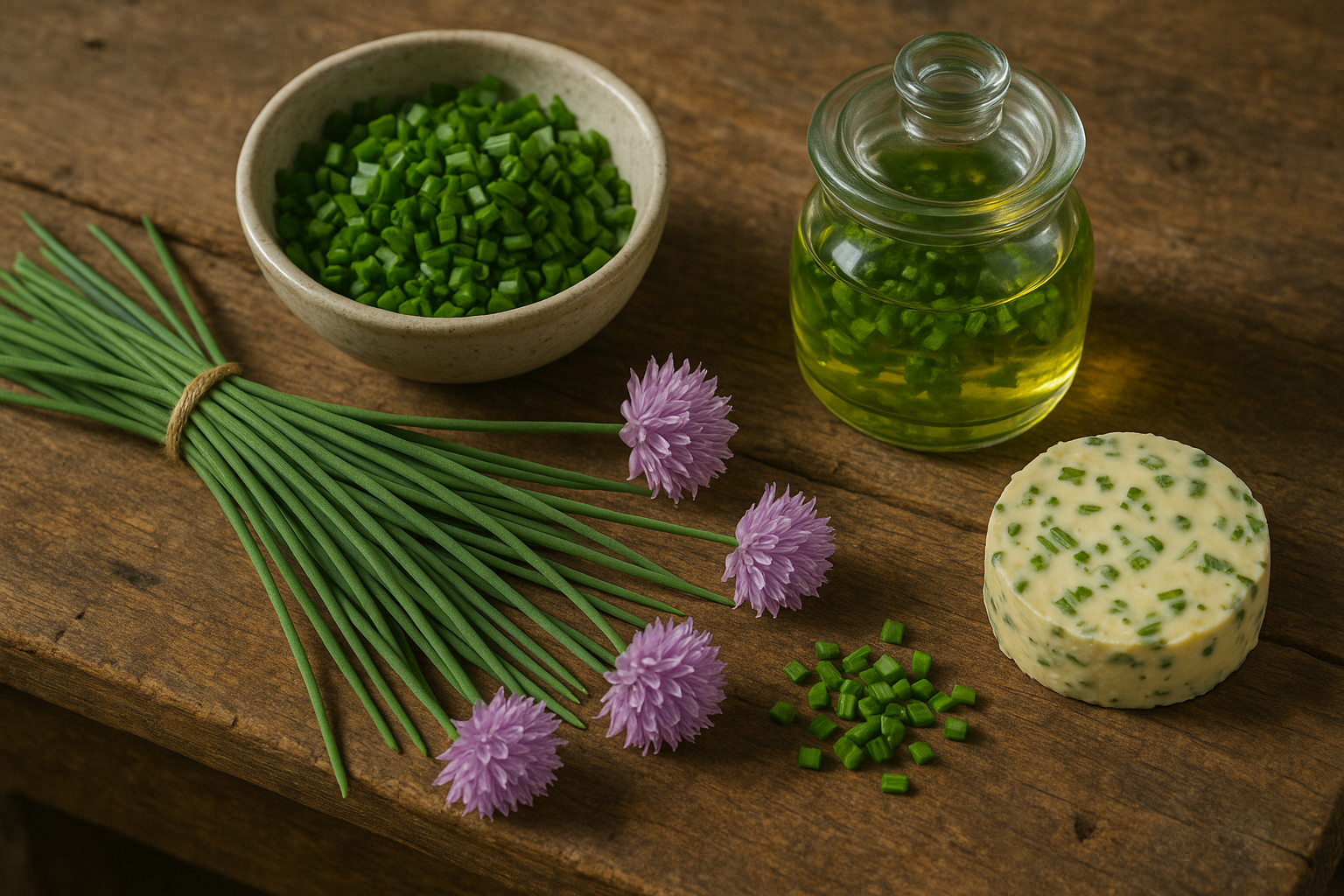Introduction
Cooking with chives is an easy way to elevate the flavor and visual appeal of almost any homemade dish. As one of the most versatile herbs in the kitchen, chives bring a mild, fresh onion taste that complements everything from creamy mashed potatoes to omelets and salads. In this article, we’ll dive into the essentials of using chives, uncovering the best pairings—like eggs, cheese, potatoes, and seafood—that help their delicate flavor shine.
You’ll discover simple cooking tips to avoid common mistakes, plus creative ideas for adding chives to quick weeknight meals or special-occasion recipes. Whether you’re a seasoned cook or just learning your way around the spice rack, you’ll find practical advice you can use right away to get the most out of this underrated herb. Let’s make cooking with chives an effortless and delicious part of your kitchen routine!
What Are Chives and Why Use Them?
Chives are a slender, grass-like herb belonging to the allium family, closely related to onions, garlic, and leeks. Their vivid green, hollow stems grow like clusters of tall, delicate blades, while their edible purple blossoms add a decorative—and surprisingly flavorful—touch to dishes.
Most often, cooks snip the fresh green leaves, finely chopping them as a garnish for soups, potatoes, eggs, or salads. Chive leaves deliver a subtle, fresh onion flavor with a hint of garlic, making them a versatile finish that never overwhelms a dish. Chive flowers are also edible and can be sprinkled over salads for a mild, aromatic bite and a pop of color.
Beyond their mild taste and appealing appearance, chives offer nutritional benefits: they are low in calories but rich in vitamins A and K, with a slight punch of vitamin C and antioxidants, adding a health boost without any fuss.
It’s easy to confuse chives with green onions or garlic scapes, but chives have narrower, more tender stalks and a more delicate flavor. Green onions have round bulbs and a sharper taste, while garlic scapes are thicker, curly, and distinctly garlicky.
For everyday cooks, chives are an easy way to elevate both the taste and look of home-cooked meals.
Best Ways to Use Chives in Cooking
Chives are incredibly versatile, adding a mild onion flavor that brightens a wide range of dishes. The most classic way to use chives is as a fresh garnish—snip them over soups like potato or tomato, sprinkle over baked or mashed potatoes, fold into creamy scrambled eggs, or stir into salads for a fresh, delicate kick.
But chives aren’t just for topping—get creative by making compound butters (softened butter mixed with chopped chives and a pinch of salt) to dollop on grilled meats or veggies, or infuse olive oil with chives for a quick herbed finishing oil. Toss chive blossoms into white wine vinegar for a gorgeous blush-tinted chive blossom vinegar that makes salads pop.
Chives also shine when mixed into savory baked goods like biscuits, scones, and even focaccia, offering little green bursts of flavor in every bite. To get the best from chives, always add them at the end of cooking or use them raw—heat dulls their bright flavor and color, so stir them in during the last few seconds or scatter right before serving.
If you’re lucky enough to have a bumper crop, preserve some of the harvest by drying chives in bundles or using an oven on low heat, though be aware their flavor will be subtler. For longer-lasting flavor, try fermenting chopped chives with salt, which creates an umami-rich condiment perfect for adding a hit of flavor to future dishes.
Whether classic or inventive, chives make simple meals special.
Fresh vs. Dried Chives
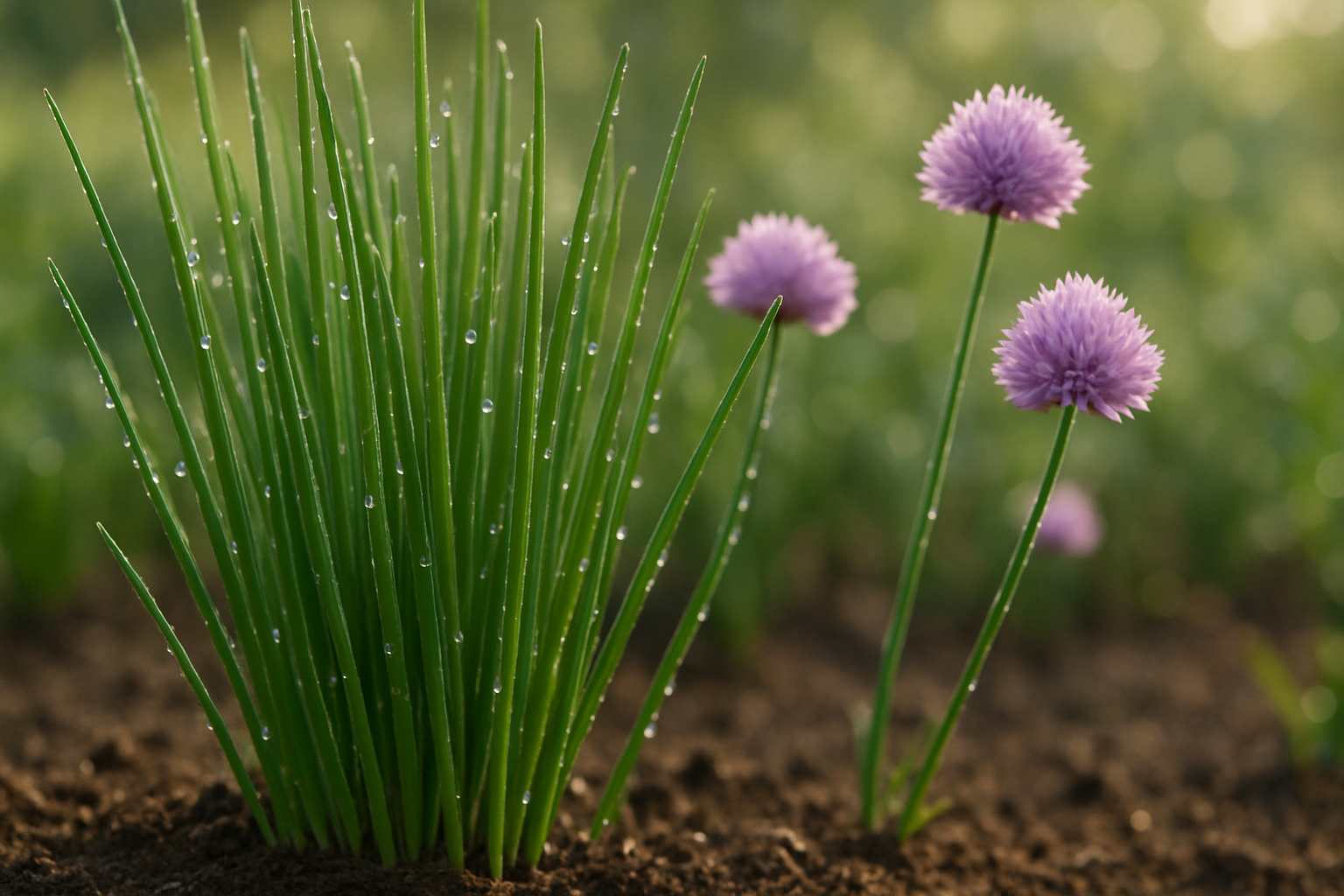
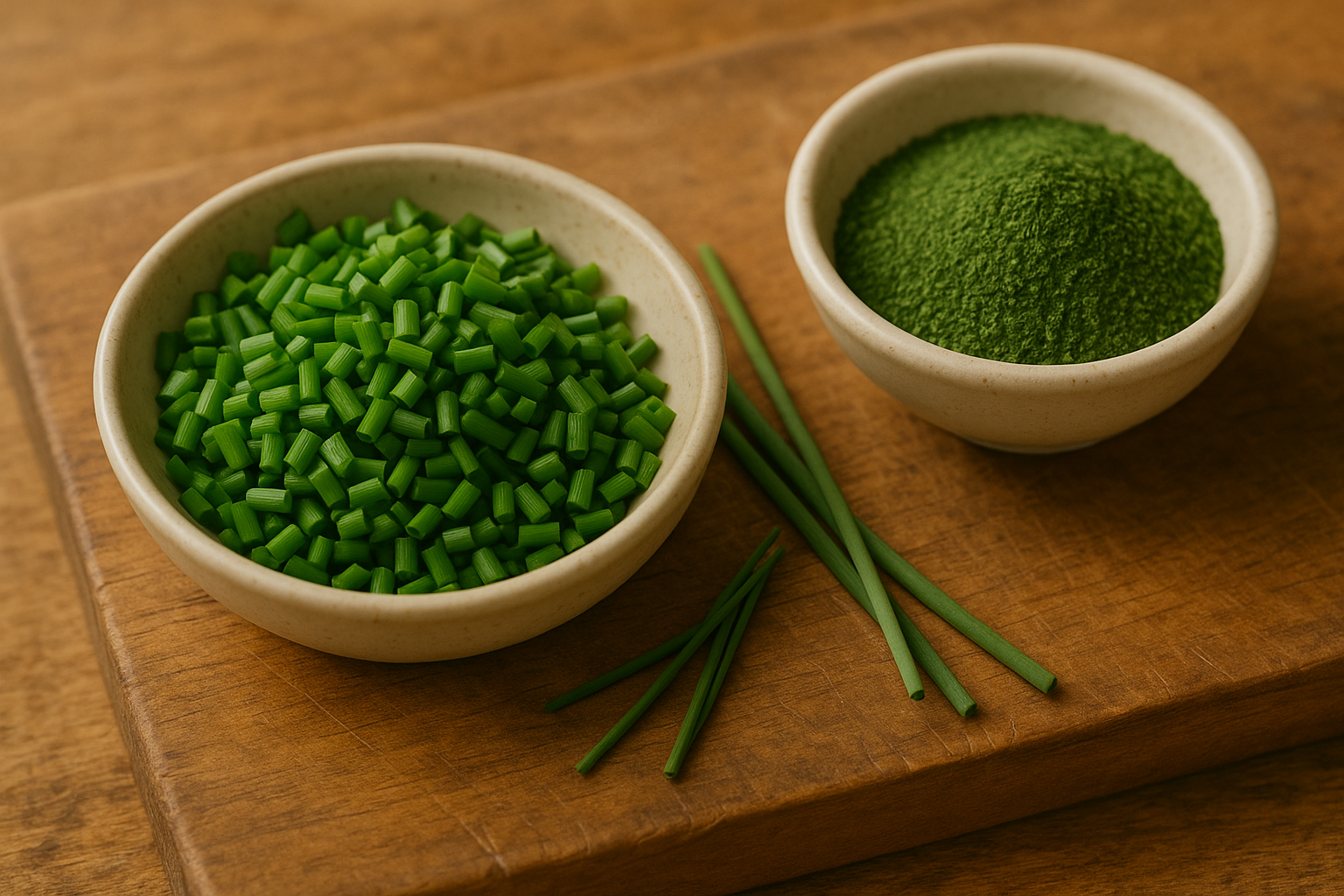
Fresh chives offer a bright, oniony bite and delicate texture that instantly elevates dishes like baked potatoes, salads, and omelets. Their vibrant green color and subtle crunch make them perfect for garnishing right before serving.
Dried chives, in contrast, have a milder flavor and a softer texture since dehydration removes much of their natural moisture. However, they’re a smart substitute when fresh chives aren’t on hand or are out of season. Dried chives excel in slow-cooked meals like soups, stews, or casseroles, where they can rehydrate gradually and blend into the dish.
If you want dried chives to taste a bit closer to fresh, try soaking them in warm water for about 5–10 minutes before adding to recipes. This plumps them up and revives some of their flavor.
For storage:
- Keep fresh chives wrapped in a damp paper towel inside a sealed container in the fridge for up to a week.
- Store dried chives in a cool, dark pantry, sealed tightly to preserve their potency for several months.
Best Pairings
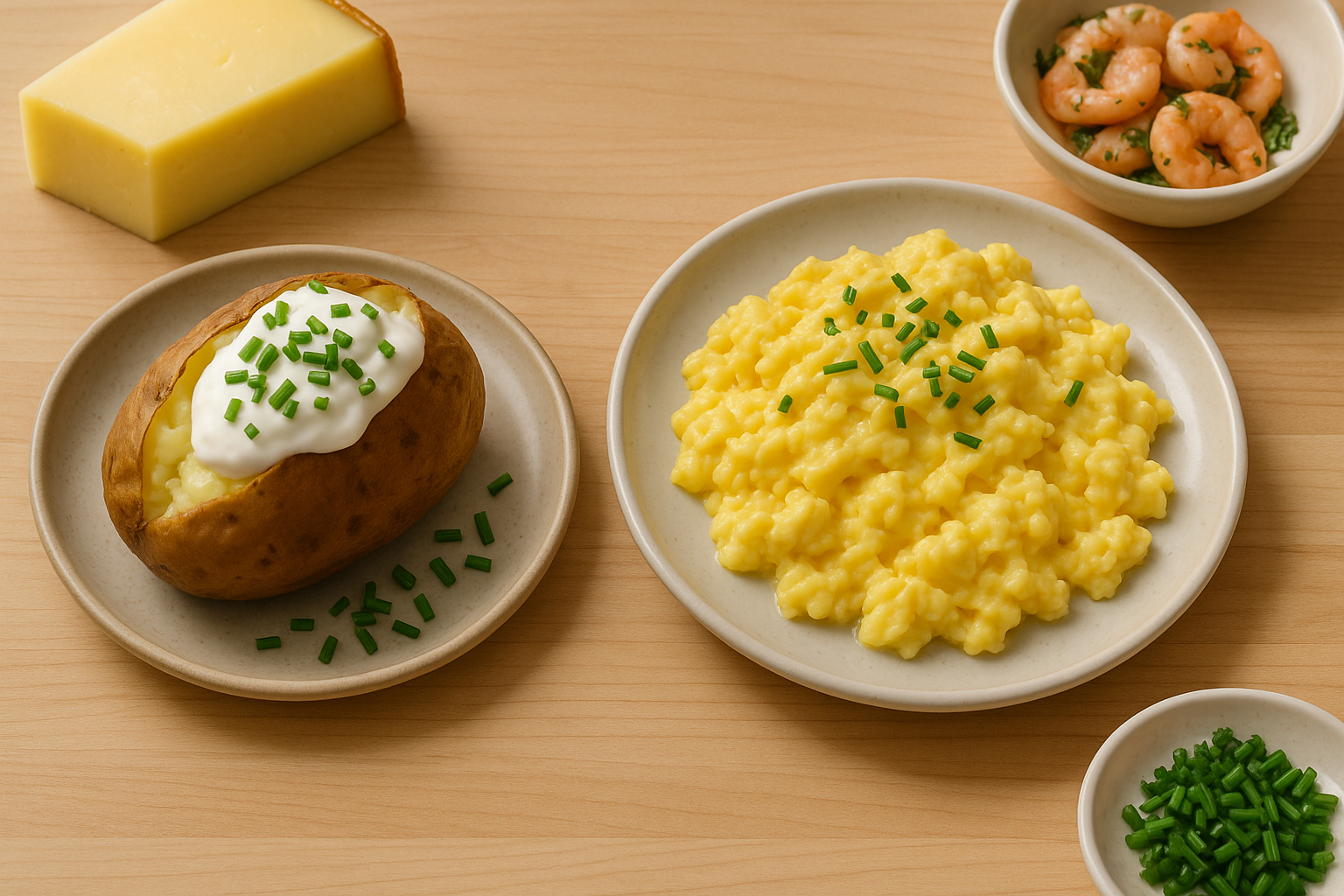
Chives are a versatile herb that brings fresh, oniony flavor and vibrant green color to both rich and mild dishes. A classic pairing is with potatoes—think of a fluffy baked potato topped with sour cream and a generous sprinkle of fresh chives, or creamy mashed potatoes enlivened with their subtle bite.
Eggs are another natural canvas for chives: stir them into scrambled eggs or omelets for a simple but tasty boost. In dairy-rich dishes like cream cheese spreads or cottage cheese, chives cut through the richness and add bright notes without overwhelming other flavors.
Seafood, especially fish and shellfish such as salmon, crab, or shrimp, pairs beautifully with chives. Try folding them into a lemony butter sauce for fish or mixing them with mayo for a quick shrimp salad.
Chives also shine in salads, where their mild allium flavor won’t overpower delicate greens—toss with baby lettuce, radishes, and a light vinaigrette, or scatter chopped chives over a caprese salad for a unique twist.
Globally, chives play starring roles in French cuisine (sprinkled over soups and vegetables), Chinese dumplings and pancakes, and Eastern European dairy dishes.
For a quick appetizer, blend chives into softened cream cheese and serve with smoked salmon on rye. Or mix them into compound butter to melt over grilled steak or roasted veggies. However you choose to use them, chives are a simple way to lift flavors, add color, and provide a fresh finish to all kinds of meals.
Harvesting, Storing, and Preserving Chives
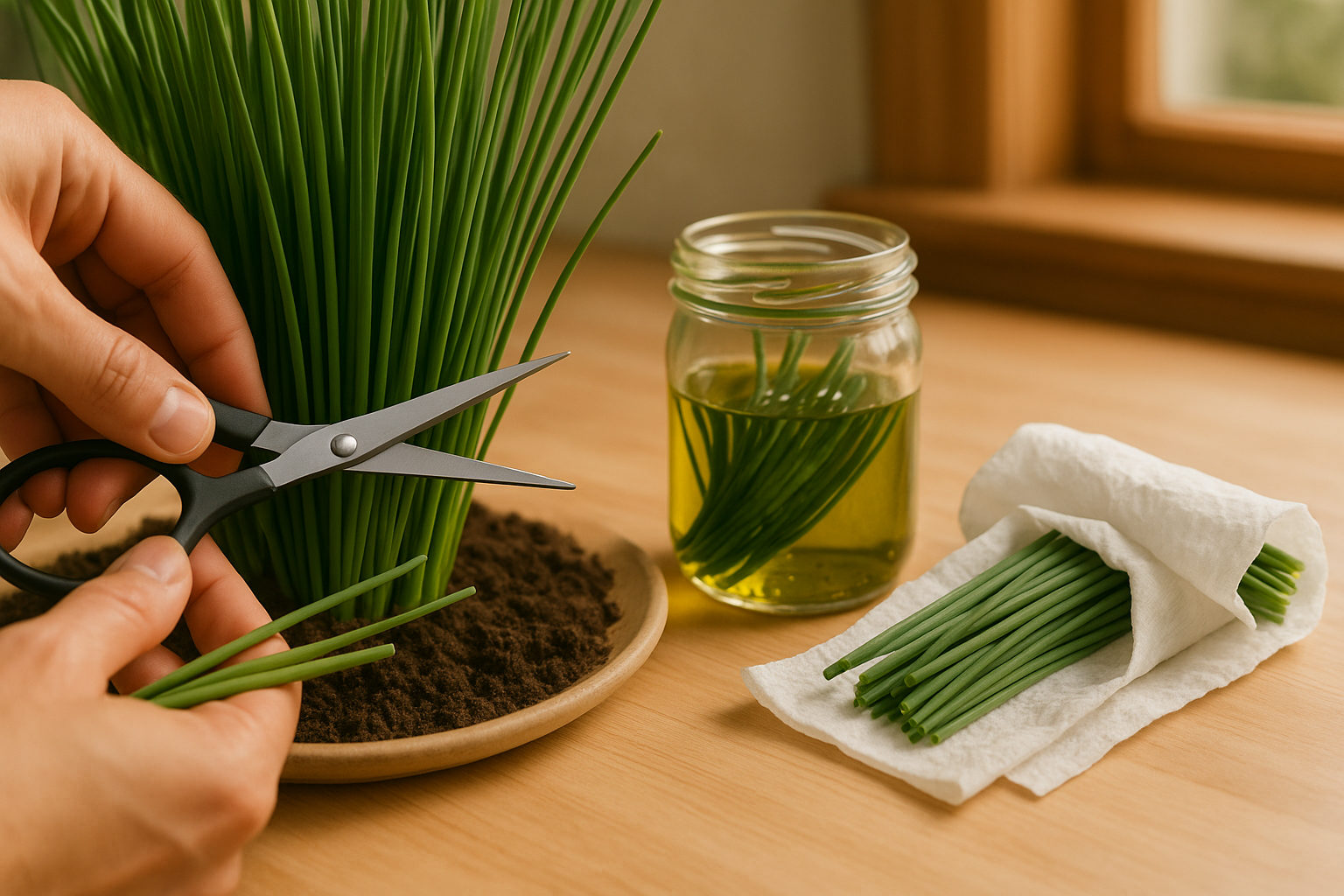
Harvesting chives is simple—just snip the leaves about an inch above the soil using kitchen scissors or a sharp knife; this encourages new, healthy growth. The best time to harvest is in the morning when the leaves are crisp and flavorful. If buying from the market, choose bunches that look bright green and perky.
At home, loosely wrap fresh chives in a damp paper towel and store them in a resealable bag or airtight container in the crisper drawer of your refrigerator—this helps keep them fresh for up to a week. For longer storage, freeze chopped chives in ice cube trays topped with water or olive oil, then store the cubes in freezer bags for up to six months.
Preserving chives is easy, too:
- Mash chopped chives into softened butter for a delicious spread.
- Blend them with oil to create a fragrant infused oil—just remember to refrigerate homemade oils and use them within a week due to food safety concerns.
- For a tangy twist, add chives to a basic fermentation recipe with salt and water, creating a unique, probiotic-rich condiment for salads, eggs, or potatoes.
Common Substitutes and Tips for Success
If you find yourself without chives, don’t worry—delicious substitutes are probably already in your kitchen. Try finely slicing scallions (green onions) for a similar mild onion flavor, or use leeks (especially the tender green tops) for a slightly sweeter touch. Garlic scapes also work well, offering a gentle garlicky note and a pretty green color.
To make the most of these herbs, always use sharp kitchen scissors or a knife to cut them cleanly; crushing or dull cuts can release bitterness. Add them toward the end of cooking or as a garnish to preserve their fresh taste—overcooking can dull their delicate flavor and vivid color.
Most of all, use your creativity! Sprinkle chopped substitutes over baked potatoes, soup, scrambled eggs, or salads for a fresh lift. Playing around with different herbs in place of chives is a fun way to discover new favorites and keep your dishes vibrant.
